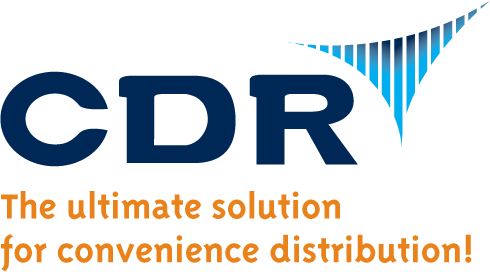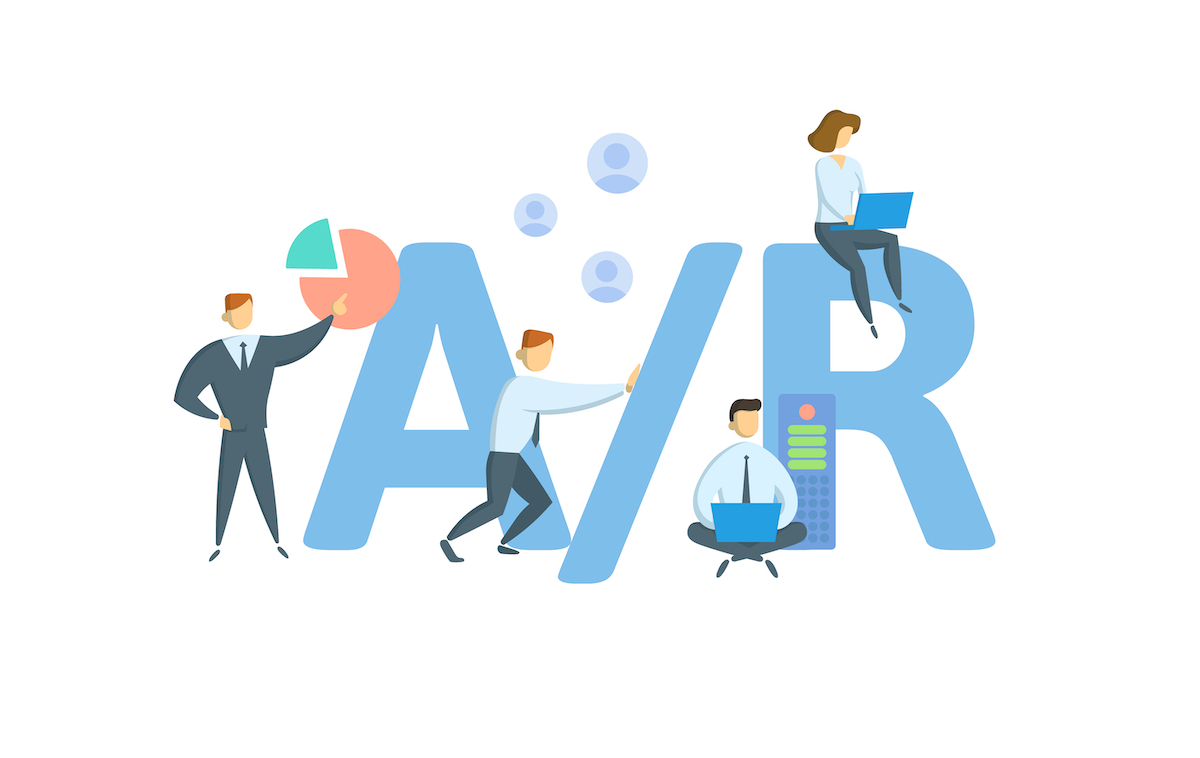Wondering how to streamline your accounts receivable process? Dive into our guide to discover how specialized software solutions can simplify AR management and boost efficiency for convenience distributors.
Accounts receivable (AR) is a linchpin in the financial machinery of any business. For convenience distributors, who often deal with a myriad of transactions daily, managing AR efficiently is not just a routine task—it’s a strategic imperative. In an industry where margins can be tight and cash flow is king, a hiccup in the accounts receivable process can ripple through the entire operation.
This article will explore the multifaceted world of AR, shedding light on its importance, the challenges it presents, and the strategies that can turn this potential headache into a competitive advantage.
The Importance of Accounts Receivable for Convenience Distributors
In the bustling world of convenience distribution, AR isn’t just a ledger entry—it’s a reflection of the company’s relationship with its clients. Efficient AR processes ensure:
- Steady Cash Flow: Cash is the lifeblood of any business. Regular inflow ensures operations run smoothly, salaries are paid on time, and investments can be made for future growth.
- Reduced Risk of Bad Debts: An efficient AR process can flag potential bad debts early, allowing businesses to take proactive measures.
- Improved Relationships with Retailers and Partners: Prompt and accurate billing fosters trust. When retailers and partners know what to expect and when, it strengthens business relationships.
- Quick Conversion of AR into Cash: In the financial world, time is often money. The faster an invoice is settled, the better it is for the company’s bottom line.
Challenges Faced by Convenience Distributors
The road to efficient AR management comes with its set of hurdles. If not addressed, these can significantly disrupt your business operations. Let’s delve into some of the most common and pressing issues:
Delayed Payments
One of the most common challenges faced by convenience distributors is the issue of delayed payments. There could be a myriad of reasons behind this delay. Sometimes, it’s a simple oversight by the retailer, while at other times, it could be due to financial difficulties they are facing. Administrative hiccups, such as misplaced invoices or clerical errors, can also contribute to these delays.
Regardless of the reason, delayed payments can strain the distributor-retailer relationship. Moreover, consistent delays can severely impact the distributor’s cash flow, making it challenging to manage operational costs and invest in growth opportunities.

Manual Processes
We live in an era of rapid digital transformation. In such a time, relying solely on manual methods for AR management can be a significant setback. Manual processes, such as manually recording transactions, sending out paper invoices, or tracking payments in ledgers, are not only time-consuming but also prone to human errors. These errors can lead to disputes over amounts, further delaying payments.
Additionally, manual methods lack the efficiency and speed that digital tools offer, making it harder for distributors to stay competitive and responsive in a dynamic market.
Adjustments and Reversals
The world of accounts receivable isn’t always linear. There are times when products are returned, discounts are applied post-sale, or other adjustments need to be made to the original invoice amount.
These adjustments and reversals can complicate the AR process. For instance, if a retailer returns a product, the distributor needs to ensure that the return is recorded accurately, the inventory is updated, and the retailer’s account reflects the change.
Such intricacies require meticulous tracking and management to ensure that the AR remains accurate and transparent for both the distributor and the retailer.
The Role of Technology in AR Management
Leveraging technology in business isn’t just a luxury these days—it’s a necessity. Especially in the realm of Accounts Receivable, where precision, timeliness, and efficiency are paramount.
Modern technology, particularly software solutions like the DAC system, not only enhances but is transforming the way convenience distributors manage their receivables.
Here’s why embracing this technological shift is crucial:
- Automation: Gone are the days of manual data entry and tracking. Automation not only reduces the chances of human error but also speeds up processes. This means faster invoicing, timely reminders, and a significant reduction in administrative overhead.
- Real-time Tracking: In the world of AR, delays can be costly. With real-time tracking, distributors can have a live pulse on their payments. This allows for immediate action, whether it’s following up on a delayed payment or addressing discrepancies.
- Integration: The true power of modern AR systems lies in their ability to integrate seamlessly with other business tools and processes. This holistic approach ensures that data flows smoothly across departments, from sales to finance, creating a unified and efficient AR management system.
- Data Analytics: Modern systems come equipped with analytics capabilities. This means distributors can gain insights into payment patterns, identify consistent late payers, and even forecast future payment behaviors. Such insights can be invaluable in shaping credit policies and strategies.
- Enhanced Security: With increasing cyber threats, the security of financial data is paramount. Modern AR solutions prioritize security, ensuring that sensitive data remains protected at all times.
In essence, technology is reshaping the AR landscape, making processes more efficient, accurate, and strategic. For convenience distributors aiming to stay competitive and financially robust, embracing these technological advancements is not just beneficial—it’s essential.
Understanding the Accounts Receivable Cycle
For those deeply entrenched in the convenience distribution sector, the AR cycle is second nature. But as the industry evolves and new professionals join the ranks, it’s always beneficial to ensure we’re all aligned. Here’s a short breakdown of the accounts receivable cycle in convenience distribution:
Issuance of Invoice: The foundational step. An invoice isn’t just a bill—it’s a detailed record of the transaction, outlining the terms, products or services provided, and the payment due.
Journal Entry: This is about precision. Every transaction, big or small, is documented to ensure accuracy in the company’s financial records.
Payment Collection: This stage is crucial as it involves receiving the actual payments. With multiple payment methods available, from checks to credit cards, it’s essential to have a system that can handle and process these efficiently, ensuring timely collection.
Reconciliation: The final checkpoint. It ensures that payments received align with their respective invoices, keeping the financial engine running smoothly.

Best Practices for Optimizing AR
While AR is a staple in the financial process, perfecting its management can set you apart. Consider these strategies:
- Embrace Automation: Minimize manual tasks to reduce errors and enhance efficiency.
-
- Benefit: As we’ve said, automation not only saves time but also ensures a consistent and error-free AR process.
- Monitor Aging Reports: Regularly review unpaid invoices to prioritize collections and identify potential bad debts.
-
- Benefit: Keeping a close eye on aging reports helps in proactive debt management, ensuring a healthier cash flow.
- Prioritize Clear Communication: Ensure payment terms and conditions are transparent to reduce misunderstandings and disputes.
-
- Benefit: Clear communication builds trust with clients, leading to fewer disputes and smoother transactions.
- Streamline Adjustments: Have a standardized process for handling discounts, returns, and other adjustments to maintain AR cycle integrity.
-
- Benefit: A well-defined adjustment process ensures that the AR cycle remains uninterrupted, leading to faster reconciliations.
How CDR’s DAC Enhances the Accounts Receivable Process
In the convenience distribution market, distributors are faced with numerous tasks that require meticulous tracking on a daily basis. This is where CDR’s DAC management system steps in, aligning departments and streamlining distribution processes onto a single agile platform.
Integrated ACH Processing
One of the standout features of DAC is its A/R ACH module. This module simplifies the AR process by allowing open transactions to be selected based on terms and payment code. Once a batch is created with a set draft date, customers are promptly notified. A file, in standard NACHA format, is then generated, ready to be uploaded or emailed to the bank. Simultaneously, an A/R batch is created to post the payments once the bank approves the file. This seamless integration ensures timely and accurate payment processing, reducing the chances of errors and delays.
Benefits Beyond AR
But DAC’s capabilities don’t stop at AR. The system consistently delivers smarter buying decisions, improved inventory controls, controlled operational costs, and enhanced vendor and customer relationships. With DAC, convenience distributors gain clearer visibility of data through self-service tools, ensuring that every aspect of their business, from warehousing to customer web services, is optimized.
What is DAC?
In essence, CDR’s DAC is a comprehensive, end-to-end, cloud-hosted software management system tailored specifically for convenience distributors. By integrating business applications such as RF warehousing, dynamic replenishment, returns management, vendor relations, mobile solutions, customer web services, and financials, DAC ensures that convenience distributors are equipped with the tools they need to thrive in a competitive market.
Conclusion
For convenience distributors, AR isn’t just a process—it’s a strategic asset. In a competitive market, efficient AR management can offer a distinct advantage, ensuring steady cash flow, strong retailer relationships, and robust financial health. With technology like the DAC system at their disposal, distributors are well-equipped to turn the challenges of AR into opportunities for growth and success.
Interested in optimizing your AR processes further?
Explore the Financial Management features of DAC ERP and discover how it can revolutionize your AR management.
Frequently Asked Questions
Why is an efficient accounts receivable (AR) process critical for convenience distributors?
Efficient AR processes help maintain steady cash flow, reduce bad debt risk, and improve customer relationships. In convenience distribution—where margins are tight and delivery cycles are frequent—having timely and accurate collections is essential to sustain operations and support growth.
What are the common challenges in managing AR for convenience distributors?
Distributors often deal with late payments, manual errors, complex invoice adjustments, and inconsistent payment terms across accounts. Handling returns, discounts, and reversals manually can slow down collections and lead to reconciliation headaches.
How does CDR’s DAC ERP streamline the AR process?
The DAC ERP system automates key AR functions like invoicing, payment posting, and adjustment tracking. With built-in workflows for credits, returns, and reversals, teams can reduce manual entry and improve overall accuracy, while gaining visibility into customer payment behavior.
What is the A/R ACH module and how does it improve payment collection?
CDR’s A/R ACH module compiles open transactions into batch payments based on customer terms and codes, then generates NACHA-compliant files for bank processing. It also allows for direct posting of approved payments, speeding up collections and reducing clerical work.
What are the best practices for optimizing the AR cycle in convenience distribution?
Automation is key. Use ERP tools to standardize billing and payment processes, actively monitor aging reports, clearly communicate terms, and enforce consistent workflows for adjustments. These practices help reduce outstanding receivables and strengthen financial control.

